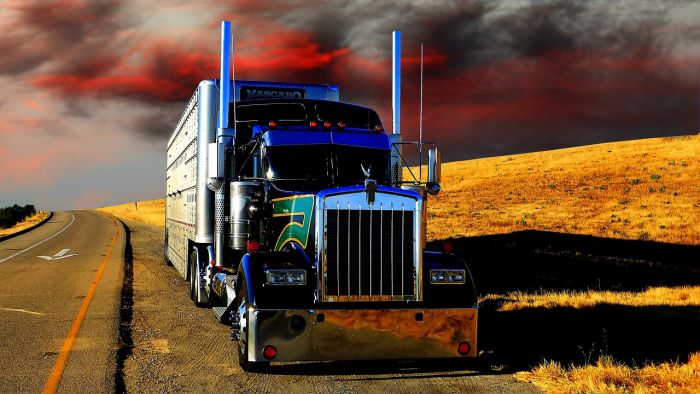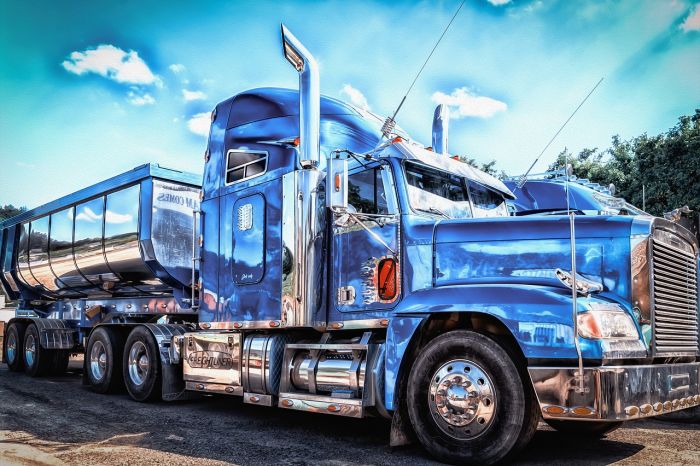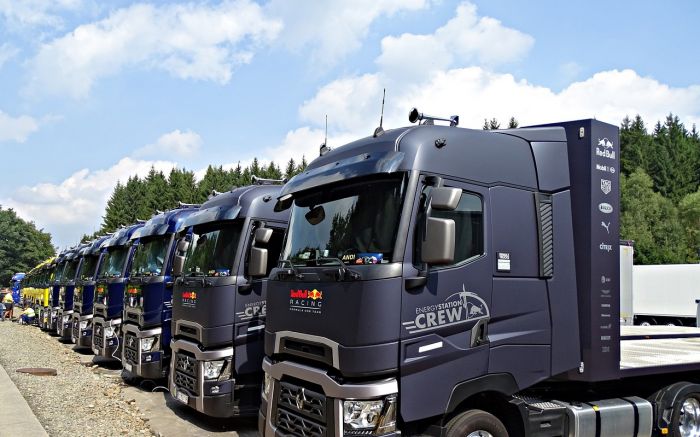The trucking industry used to be about moving freight from point A to point B. But it’s not like that anymore. Nowadays it’s a high-tech and fast evolving field where data, logistics, and human performance work together to put the freight on the open road.
What has changed since the old days? Well, the regulations are tighter, fuel costs are higher, and safety has an increased level of awareness. So now you have fleet managers who are under constant pressure to improve efficiency while at the same time they have to keep both driver and data protected.
By all accounts, fleet management is transformed into a sophisticated balancing act between compliance and operational logistics. And usually, the companies that succeed in their work are the ones that embrace data and safety as strategy tools.

Managing your fleet with data
How to manage your fleet and still be efficient and safe when it comes to data? You can use some fleet management solutions for trucking, and the best one would be having all your logistics and operations in one place, like centralized and secure software. You can follow every aspect, such as drivers, expenses like fuel, maintenance, and more. Can you imagine doing all this in real time?
Yes, you heard it right. Real-time data is no longer a luxury, it's a requirement. Forget about tracking mileage and fuel consumption with spreadsheets and manual logbooks. You want to have a well-oiled operation, modern, and scary in the eyes of competitors? There’s nothing like telematics systems, GPS-enabled sensors, and advanced software platforms to help you achieve that.
How to use this data
Can you use this system to reduce delivery delays? Absolutely. With all this info, dispatchers can easily reroute trucks to avoid traffic jams or weather misfortunes. You can also see how your drivers behave behind the wheel, like if they break suddenly, do harsh cornering, speeding, and then you can give them feedback and talk about it. Maybe there’s an issue with the vehicle, traffic, or they need anger management? If you’ve ever been out there in a car during rush hour, you know the feeling.
You can also prevent unplanned downtime if you identify maintenance issues before they snowball into breakdowns. With all of these opportunities at your disposal, you can have a better fleet performance and enhanced driver safety and reduced liability.
Integrated platforms are an excellent option for your fleet because you can have vehicle diagnostics, route optimization, fuel usage, and driver hours all in one centralized system. The system can analyze all the given data and help managers bring informed decisions, rather they rely on gut feeling.
This can also help your company to prove compliance with industry regulations, which is an extremely important component in a world where oversights are not tolerated anymore, especially when it comes to safety or the environment.
Protecting data and driver privacy
Can you exaggerate in making your business too digital? Well, in the trucking case, not so likely. With GPS coordinates, engine status, and electronic logs you can make different kinds of analysis to help you with determining routes.
Plus, you can also collect biometric data from in-cab cameras or fatigue-monitoring systems. Sure, there’s a law that says how many hours per day and week can a driver stay behind a wheel, but if you notice that your employee is getting tired faster or needs more breaks to be able to drive impeccably, they should be allowed to do that.
While all of this provides valuable insights, it also raises one big question: what about privacy?
You’re in ethical and legal obligation to protect both driver and customer information. There’re regulations like the General Data Protection Regulations (GDPR) in Europe and the California Consumer Privacy Act (CCPA) in the US, and with them in mind, you need to know how data is collected, stored, and shared.
Handling consent management in your fleet data
Even if you don’t happen to operate internationally, data privacy standards from other regions can still bear some impact on you. Drivers could be passing through states or countries where the laws about privacy are stricter, and data crossing borders, even virtually, can fall under different legal frameworks. Yes, this sounds a bit nightmarish, but there’s a solution.
This is where consent management becomes a very important part of the fleet data system. For instance, with a OneTrust alternative like Usercentrics, you can have one of the most prominent consent management platforms (CMPs) out there. Many people are comfortable using it since it has a legacy in the data privacy industry. You can have a peace of mind knowing that all digital interactions–whether from drivers using a mobile app or back-office staff processing vehicle data–are transparent and legally compliant.
Drivers want to know that their personal and professional data is secure, while they also know you’ll look after them by analysing that data.

The evolution of safety in the trucking industry
Safety programs nowadays are all powered with data. You no longer have to rely only on periodic check-ins or paper evaluations, with all the tools to track driver behavior in real time. They can wear tech that can monitor fatigue, in case of accidents there are dashcams, and AI-powered software can detect patterns that suggest a driver might be at risk, so you can do something about it in real time.
What’s more important, you can use this data proactively. Instead of only reacting to incidents, you can prevent them. For instance, let’s say you have a driver who loves to break hard. He might benefit from extra training, and the truck might need a mechanical check on the braking system.
The same goes for monitoring hours of service through electronic logging devices (ELDs). With that, you know how long your drivers work. Going over safe limits was a major cause of fatigue-related accidents in the past.
With all the tools and possibilities they bring, it’s hard to draw the line between looking after your drivers and making them feel surveilled or micromanaged. It takes thoughtful policy, clear communication, and a commitment to using data to support (not punish) drivers.
As a fleet manager, you need to know that the balance is everything. Safety is like an ecosystem–one part technology, one part training, and one part culture. In order to see improvements in the long run, you need to invest in professional development, recognize positive behaviour, and invite feedback.
Turning regulations into strategic assets
Honestly speaking, no one loves regulations. They’re complex, they change often, and breaking them or just ignoring them can be expensive. But they don’t have to be a roadblock. Using them smartly, you can stand out in the market.
Take emissions standards, for example. Operators that manage and monitor their vehicles’ emissions data can optimize routes and maintenance schedules to reduce fuel use. That’s a win for compliance and a win for the bottom line. Also, in case of inspections, you can easily prove that everything is just perfect and as it should be.
Also, demonstrating responsibility to clients feels great, among other things. Many companies and businesses like to evaluate their supply chain partners on safety, compliance, and sustainability.
The newest demand is for trucking companies that are greener than others, so having electrical vehicles can be a huge plus in the industry. And to have a strong fleet management system and transparent data policies is also something that will make you more attractive to partners and potential clients.

The future of trucking
There’s no more question about it–the future of fleet management is digital. But it’s certainly not impersonal. Quite the opposite, actually. As technology takes over routine tasks, there’s more room for human focus, so you can look after driver well-being, make strategic decisions, and build a resilient before-its-time company.
The next generation of fleet leaders won’t just be logistics experts. They’ll be data interpreters, compliance navigators, and culture builders. And they all will have to understand how to use the newest tools to help their operations.
You’ll know when your company is a true success–when your drivers feel safe, supported, and respected. If better fleet management can help with that, go for it!
Petra Rapaić is a B2B SaaS Content Writer. Her work appeared in the likes of Cm-alliance.com, Fundz.net, and Gfxmaker.com. On her free days she likes to write and read fantasy.
Post Comment
Be the first to post comment!





